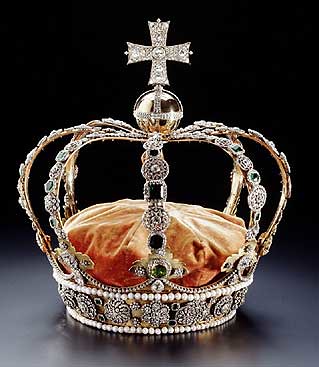Her Majesty
Queen Sofia of Spain celebrates her 75th birthday today. She was born
Princess Sophia Margarita Victoria Friederika of Greece and Denmark nearly exactly three years to the day that Greece had voted in a referendum to restore the Monarchy (3rd November 1935).
King George II of the Hellenes had returned after 12 years of exile, but he and his Romanian born wife
Queen Elisabeta had no children, therefore Princess Sophia’s father
Pavlos was Crown Prince of Greece. In 1947 the Crown Prince ascended to the Greek throne as
King Pavlos I. When she was born
Princess Sophia was second in line to the Greek throne until her brother
Konstantinos was born on 2nd June 1940. He succeeded his father in March 1964 as
King Constantine II of the Hellenes.
 |
| Princess Sophia with her father, King Pavlos, and sister Princess Irene 1948. |
The Greek Royal Family was again forced into exile in 1941, when German and Italian troops invaded the Kingdom. In an adventurous escape
Crown Princess Friederika and her two children fled first to the island of Crete, then to Egypt and finally to South Africa, where the family stayed until in 1946 another referendum affirmed the Monarchy in Greece.
During the Greek civil war and the years of reconstruction in the 1950s
Princess Sophia fulfilled her duties as a member of the Greek Royal Family.
 |
| Royal wedding in Athens in May 1962. |
On 14th May 1962 she married
Prince Juan Carlos of Borbón y Borbón in a colourful ceremony in Athens. The Greek parliament has approved a $300,000 tax-free dowry for
Princess Sophie. The bill was passed by a show of hands. Two parties, the
Union of the Centre and the Pro-Communist
United Democratic left, abstained from the voting. Opposition leaders "
denounced the practice of granting dowries and anachronistic and barbarous."
Between 1963 and 1968 the couple had three children:
Infanta Elena (* 20th December 1963),
Infanta Cristina (* 13th June 1965) and
Infant Felipe (* 30th January 1968).
 |
| Queen Sofia cuddles a panda bear in the Madrid zoo. |
After General
Franco’s death
Prince Juan Carlos was proclaimed King of Spain and the return of the Monarchy, which had been approved in a referendum in 1947 was completed in November 1975. A new democratic constitution was drawn and accepted by the Spanish people in a referendum. In the difficult years of the renewed the Monarchy as well as democracy and various attempted coups that were tried by adherents of the old regime
Queen Sofia was at her husband’s side to encourage and inspire him. On the occasion of his 30th anniversary as King,
Don Juan Carlos thanked
Queen Sofia "for her constant support, sensitivity and commitment”.
 |
Queen Sofia behind the wheel of the Peugeot iON, a zero-emission electric vehicle with a
battery life of 80 miles.
|











+et+ses+enfants+furent+peints+en+1787+par+%C3%89lisabeth+Vig%C3%A9e+Le+Brun.jpg)














